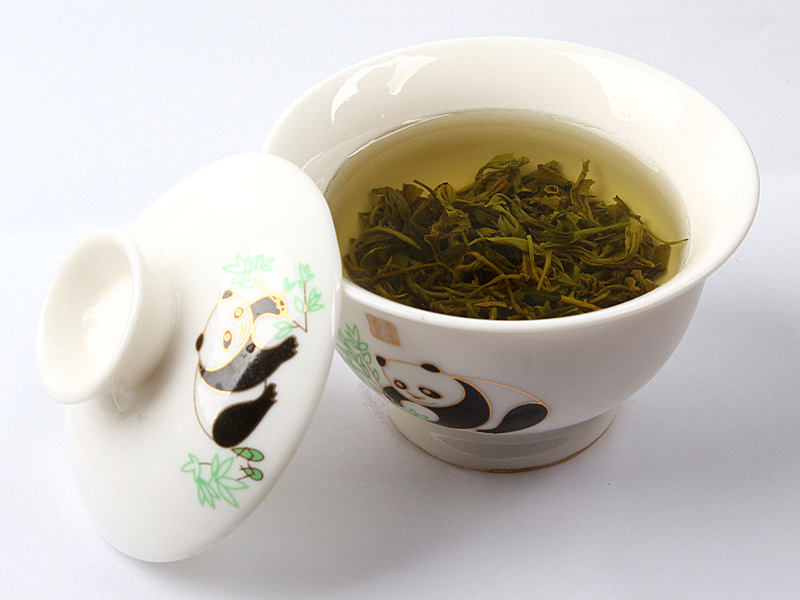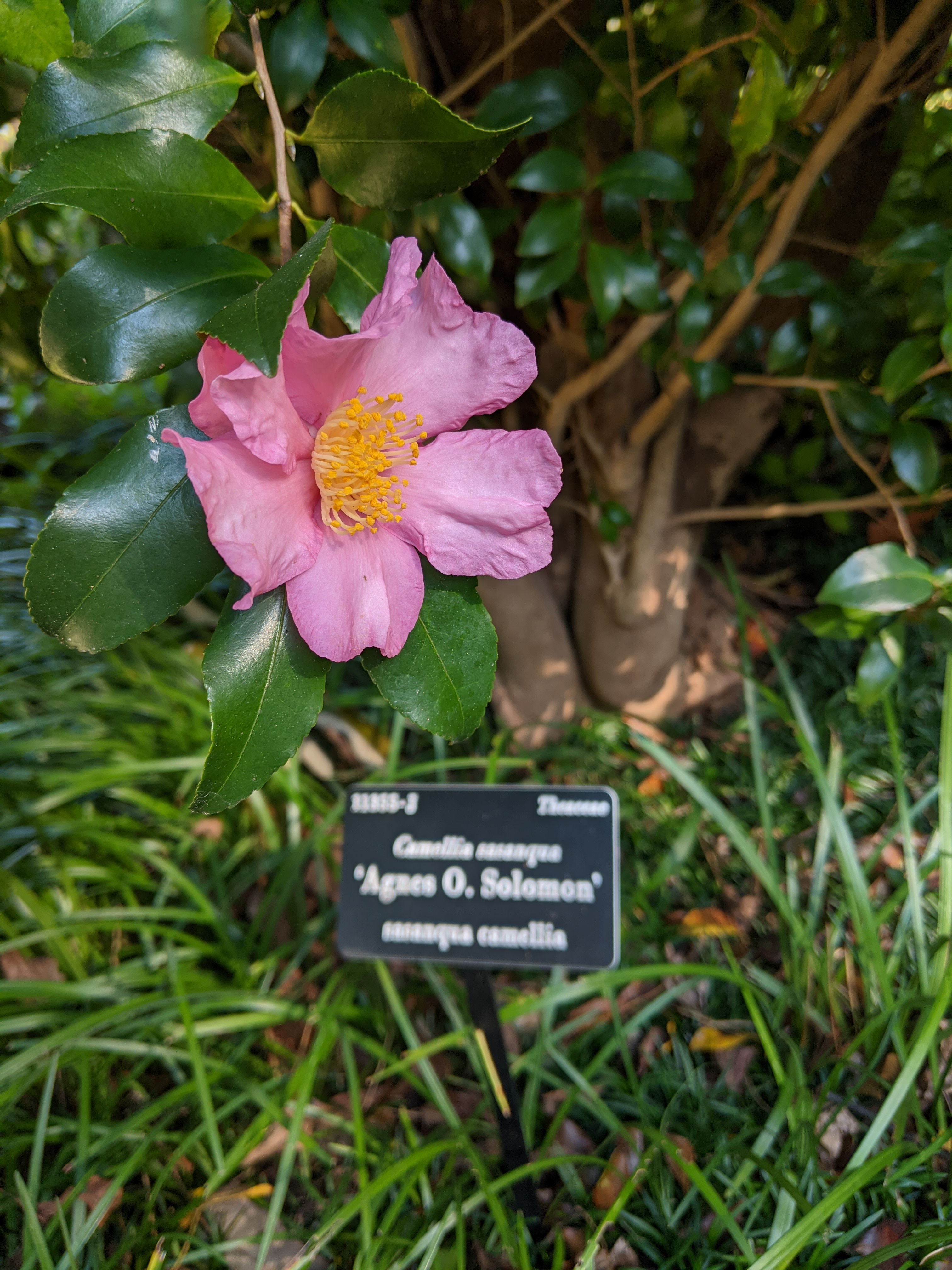By Matt Millage
It never ceases to amaze me how much tea is consumed daily. An estimated 2.16 billion cups of tea are drunk every day around the world, which puts it  second only to water in most consumed beverages (DeWitt, 2000). I, myself, have become a tea drinker over the years, and as a plant nerd, I wanted to know more about how the tea leaves were farmed. What I ended up learning is that while tea (Camellia sinensis) is by far the most well known and widely used product of the genus Camellia, it is by no means its only contribution to the herbal marketplace.
second only to water in most consumed beverages (DeWitt, 2000). I, myself, have become a tea drinker over the years, and as a plant nerd, I wanted to know more about how the tea leaves were farmed. What I ended up learning is that while tea (Camellia sinensis) is by far the most well known and widely used product of the genus Camellia, it is by no means its only contribution to the herbal marketplace.
Some of you may know the genus Camellia for the wonderful ornamental show that it puts on from fall through spring. Camellia japonica and Camellia sasanqua have been putting on shows in USDA hardiness zones 7-9 for decades, if not centuries, in the deeper south. These species have an even more prominent herbal significance in the Eastern Hemisphere, where they have been cultivated for millennia in their native ranges.
Four species of Camellias are most widely known, and all four have both traditional and contemporary herbal uses. C. sinensis is by far the most used globally, as it produces both green and black teas. C. japonica is most often considered an ornamental plant best known for its showy spring blooms, but in its native range of Japan, it has been used as both an anti-inflammatory and a conditioner for hair and skin. C. oleifera is the source of tea seed oil, which is used in cooking oils, cosmetics, and lubrication.  And finally, C. sasanqua has a long history of being used for both tea and tea seed oil in Japan, both of which go back centuries. Let us look at each of these four species in a bit more detail to better understand their contributions to both Asia and the world.
And finally, C. sasanqua has a long history of being used for both tea and tea seed oil in Japan, both of which go back centuries. Let us look at each of these four species in a bit more detail to better understand their contributions to both Asia and the world.
The Chinese legend of how tea was discovered is a mainstay of Chinese folklore and history. In the year 2737 BC, the herbalist Emperor Shen Nung was awaiting his drinking water to be boiled by a servant when a few leaves from a large Camellia sinensis shrub fell into the boiling water. Known for his propensity to sample new herbs, the Emperor decided to try the brew and found that it produced “vigor of body, contentment of mind, and determination of purpose” (DeWitt, 2000). Thus, the first written account of humans enjoying the benefits of caffeine was recorded. The rest of the world would have to wait a few thousand years for tea to find its way west, but after its discovery by European traders in the 18th century, it would quickly become one of the most popular drinks on the globe. Most  tea production is now centered mainly in the Eastern Hemisphere, however some tea is produced in America. Several states in the U.S. have small tea growers, but most American tea is grown in South Carolina, primarily at the 127-acre Charleston Tea Plantation—arguably one of the most historic tea plantations in the country.
tea production is now centered mainly in the Eastern Hemisphere, however some tea is produced in America. Several states in the U.S. have small tea growers, but most American tea is grown in South Carolina, primarily at the 127-acre Charleston Tea Plantation—arguably one of the most historic tea plantations in the country.
Camellia japonica seeds, when pressed, produce an oil referred to in Japanese as tsubaki-abura, widely used for hair and skin care. It is very rich in oleic acid, which helps keep skin and hair moisturized. It was said to be  used by the geisha to remove make-up and act as an antioxidant. C. japonica is famous for its anti-inflammatory activity in the field of medicine and ethnobotany. It is reported as a bioactive plant in folk medicine of South Korea, Japan, and China. Antioxidant and anti-inflammatory activities of the leaves are already reported, and this plant is proved to be a source of triterpenes, flavonoids, tannin, and fatty acids having antiviral, antioxidant, and anti-inflammatory activities. The seeds are also used as a traditional medicine in folk remedies for the treatment of bleeding and inflammation (Majumder, 2020).
used by the geisha to remove make-up and act as an antioxidant. C. japonica is famous for its anti-inflammatory activity in the field of medicine and ethnobotany. It is reported as a bioactive plant in folk medicine of South Korea, Japan, and China. Antioxidant and anti-inflammatory activities of the leaves are already reported, and this plant is proved to be a source of triterpenes, flavonoids, tannin, and fatty acids having antiviral, antioxidant, and anti-inflammatory activities. The seeds are also used as a traditional medicine in folk remedies for the treatment of bleeding and inflammation (Majumder, 2020).
Before the discovery of whale oil, Camellia sasanqua seed oil was used to fuel lanterns in both Japan and Korea. In fact, it was used for lighting homes, lubrication of machines, cooking oil, and cosmetics. Its use as a tea leaf persists today, with some regions of Japan and Korea preferring it to the traditional teas made from C. sinensis. Due to the difficulty of pressing the seeds, it has dwindled to a cottage industry in most regions, with some seeds now being used for many novelties of the souvenir trade, including dolls’ eyes (RBGSYD, 2012).
 Native to China, Camellia oleifera also produces tea seed oil. It is known as a cooking oil to hundreds of millions of people in east Asia, and is one of the most important cooking oils in southern China as it has a very high smoke point of 252 degrees Fahrenheit—perfect for deep frying. It has also been used to protect Japanese woodworking tools and cutlery from corrosion (Odate, Reprint Edition 1998). Sometimes also used in soap making, it is said to add a supple conditioner for the skin. Overall, the importance of it as a cooking oil cannot be overstated for large regions of Asia, as this remains to be C. oleifera’s most valuable contribution today.
Native to China, Camellia oleifera also produces tea seed oil. It is known as a cooking oil to hundreds of millions of people in east Asia, and is one of the most important cooking oils in southern China as it has a very high smoke point of 252 degrees Fahrenheit—perfect for deep frying. It has also been used to protect Japanese woodworking tools and cutlery from corrosion (Odate, Reprint Edition 1998). Sometimes also used in soap making, it is said to add a supple conditioner for the skin. Overall, the importance of it as a cooking oil cannot be overstated for large regions of Asia, as this remains to be C. oleifera’s most valuable contribution today.
While you may have to live in the Eastern Hemisphere of our globe to notice the many uses that the genus Camellia offers on a daily basis, you now hopefully have a better understanding of the many herbal benefits that it has offered humanity over the centuries. Next time you sit down to steep a cup of tea, maybe offer up a toast to the shrub that makes it all happen: the Camellia.
References
DeWitt, P. (2000, March 8). Harvard.edu. Retrieved from A Brief History of Tea: Rise and Fall of the Tea Importation Act: https://dash.harvard.edu/bitstream/handle/1/8852211/Dewitt,_Patricia.pdf
Majumder, S. G. (2020, August 27). Bulletin of The National Research Centre. Retrieved from Springer Open Corporation Website: https://bnrc.springeropen.com/articles/10.1186/s42269-020-00397-7#citeas
Odate, T. (Reprint Edition 1998). “Japanese Woodworking Tools: Their Tradition, Spirit and Use” page 174. Tokyo: Linden Publishing.
Royal Botanic Garden Sydney. (2012, February 4). Internet Archive- The Wayback Machine. Retrieved from Royal Botanic Garden Sydney NSW AU: https://web.archive.org/web/20120204064125/http://www.rbgsyd.nsw.gov.au/welcome_to_bgt/tomah/garden_features/blooming_calendar/Camellias
Photo Credits: 1) Green tea (Creative Commons); 2) Camellia sasanqua (Matt Millage); 3) Tea harvesting on Charleston, SC, tea plantation (tripadvisor.be); 4) Geisha (Creative Commons); 5) Camellia oleifera (Matt Millage).
Medicinal Disclaimer: It is the policy of The Herb Society of America, Inc. not to advise or recommend herbs for medicinal or health use. This information is intended for educational purposes only and should not be considered as a recommendation or an endorsement of any particular medical or health treatment. Please consult a health care provider before pursuing any herbal treatments.
 Matt has worked in public gardening for a little over six years and is currently the horticulturist in the Asian Collections at the U.S. National Arboretum. He previously worked at Smithsonian Gardens in a variety of capacities. Matt is an ISA-certified arborist and an IPM manager certified with both Virginia and DC.
Matt has worked in public gardening for a little over six years and is currently the horticulturist in the Asian Collections at the U.S. National Arboretum. He previously worked at Smithsonian Gardens in a variety of capacities. Matt is an ISA-certified arborist and an IPM manager certified with both Virginia and DC.

